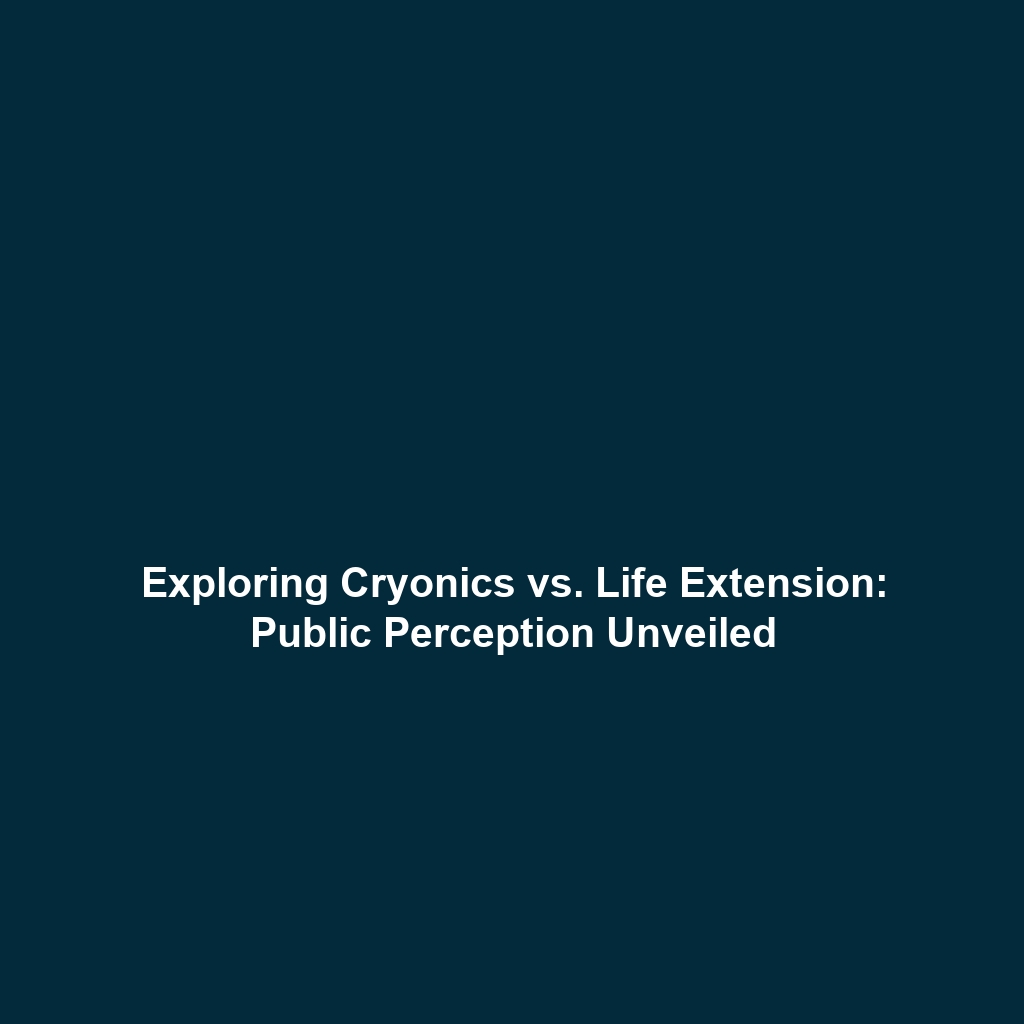Public Perception: The Controversy of Cryonics and the Mainstream Focus on Life Extension
Introduction
Cryonics, the practice of preserving individuals at low temperatures with the hope of future revival, often stirs debate due to its speculative nature. Conversely, life extension—scientific efforts aimed at prolonging lifespan and enhancing health—has gained notable attention in mainstream discussions. Understanding public perception is crucial, as it impacts funding, research directions, and the societal acceptance of these concepts within the broader field of Cryonics & Life Extension.
Key Concepts
Understanding Cryonics
Cryonics involves the preservation of individuals at cryogenic temperatures after legal death, with the aim of resuscitation in the future when technology may be advanced enough to cure their ailments. This area remains fraught with controversy due to its speculative basis and the current limits of science.
Life Extension Science
Life extension research encompasses a variety of fields including genetics, biogerontology, and regenerative medicine, focusing on ways to extend human lifespan and improve health during aging. Unlike cryonics, this area has garnered more mainstream scientific validation and funding, thanks in part to its actionable research and immediate relevance.
Applications and Real-World Uses
The applications of public perception on these technologies reveal significant insights:
- How cryonics is perceived: Public skepticism may hinder investment and technological advances within cryonic practices.
- Life extension applications: Current research in telomere extension and stem cell therapy highlights how life extension strategies are already in practice.
Current Challenges
Several challenges exist when studying public perception related to cryonics and life extension:
- Ethical Issues: Many question the morality of preserving life in uncertain future conditions.
- Scientific Validity: The unproven nature of cryonics hampers its acceptance among the scientific community.
- Funding Constraints: Disparities in funding for cryonic research compared to life extension initiatives affect development.
Future Research and Innovations
Upcoming innovations are likely to play a significant role in shaping public perception and the field as a whole:
- Advancements in Cryopreservation Techniques: Innovative methods that enhance the viability of preserved tissues may lend credibility to cryonics.
- Life Extension Breakthroughs: Next-gen technologies such as gene editing and AI-driven health diagnostics are set to revolutionize the landscape of life extension.
Conclusion
Public perception undoubtedly influences the trajectory of both cryonics and life extension research. While cryonics will likely continue to face skepticism due to its speculative approach, the growing body of research in life extension offers a promising frontier in the quest for longevity. As society progresses, continued dialogue, advancements, and ethical considerations will be crucial in shaping these fields. For further exploration, see our articles on Cryonics Applications and Advances in Life Extension Research.

